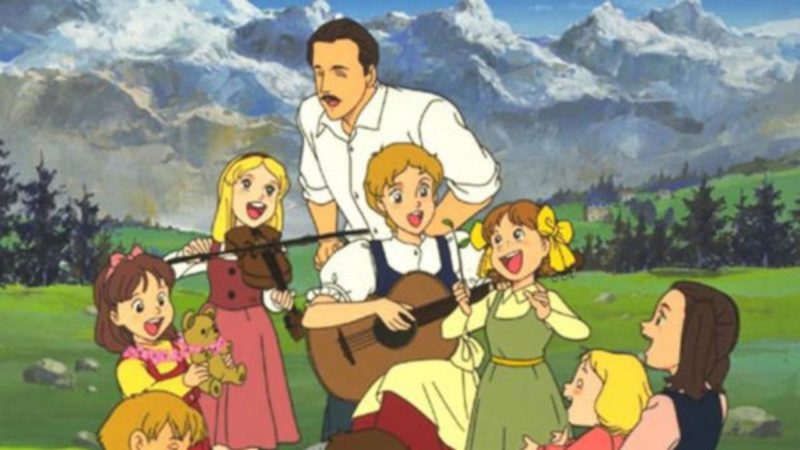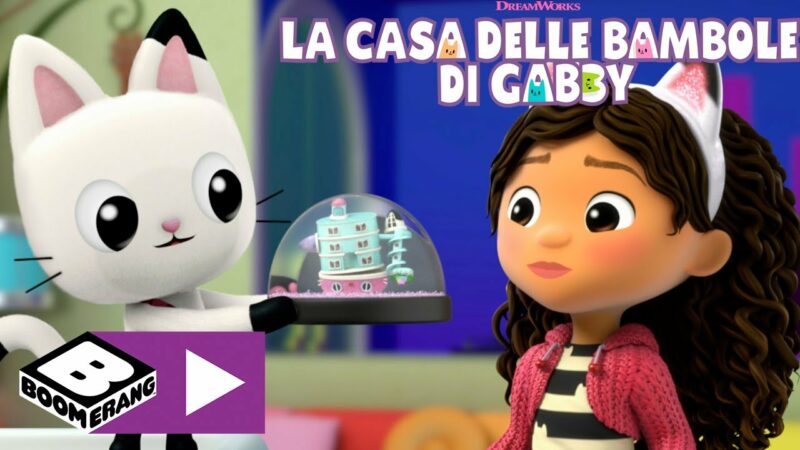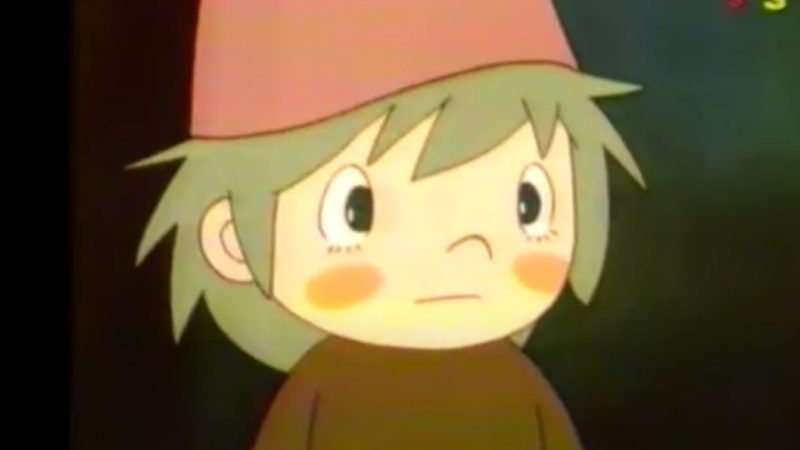The 13 Labors of Ercolino - The 1960s anime film
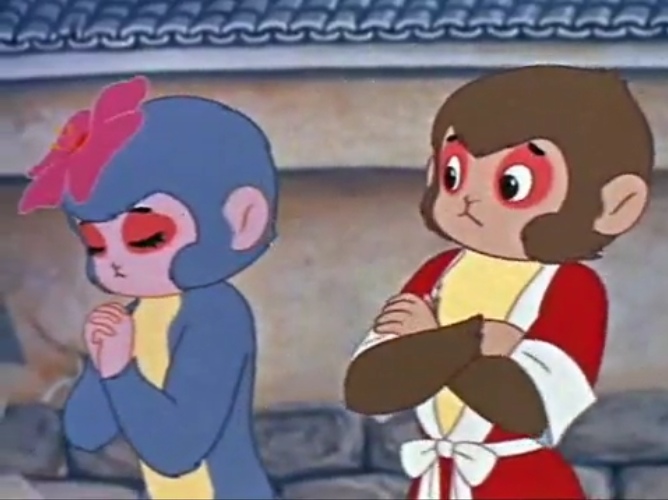
The 13 labors of Ercolino (西遊記, Saiyūki, literally "Journey to the West" in the Japanese original and "Alakazam the great”In the United States) is a 1960 Japanese musical anime film, based on the 5th century Chinese novel Journey to the West, and was one of the first animated films to be released in the United States. Osamu Tezuka was named director of the film by the Toei Company. However, Tezuka later stated that the only time he was in the studio was to pose for commercial photos. His involvement in promoting the film, however, led to his interest in animation. The film in Italy was released on January 1962, XNUMX
The story tells of Herculine (Son Gokū), a brave young monkey (a macaque) who was encouraged by all the other monkeys to become their king. Upon reaching the throne, he becomes crude and dictatorial and does not believe that humans are bigger than him. He then deceives / forces the Hermit to teach him magic (reluctantly on the part of Merlin, who warns Ercolino (Son Gokū) that the powers he acquires now will bring him much unhappiness later on).
Ercolino (Son Gokū) becomes so arrogant that he abuses his magical powers and chooses to go up to Majutsu Land (the Heavens), to challenge King Amo. He is defeated by King Amo. For his punishment, he is sentenced to serve as the bodyguard of Prince Amat on a pilgrimage; to learn humility. Eventually, learn your lesson and become a true hero.
Characters
- They are Goku: a young monkey born from a stone, protagonist of the film. At the beginning of the film, despite being brave, he turns out to be a proud and domineering king. After training with the Hermit (who gives him his name) he acquires phenomenal magical powers, including that of invoking the flying cloud Kintōn. Defeating a guard from the Garden of Paradise also takes ownership of the Nyoibō extendable staff. During the journey with the monk Sanzō-hōshi he changes his character, becoming kind and generous. It is inspired by the Sun Wukong character from the novel. In the international version it is renamed "Alakazam" (in Italian Ercolino), a name given to him by the other monkeys, and is predestined to the role of king of beasts by a prediction of the King Amo. In this version, the Hermit Gokū trains from is transformed into the wizard Merlin.
- RinRin: a young monkey, Gokū's girlfriend, who meets her immediately after being born. She deeply loves Gokū, despite the fact that the latter behaves badly towards her at first. During her boyfriend's journey, she telepathically communicates with him to guide him on the right path. In the international edition it is renamed "DeeDee" (in Italian Didi).
- Cho Hakkai: a monstrous anthropomorphic pig, with magical powers similar to those of Gokū (although weaker). Initially, he proves to be overbearing and selfish, forcing a girl to marry him. However, after Gokū defeats his half-brothers Kinkaku and Ginkaku, he offers to die in their place. He is then forced to follow Gokū and Sanzō, quickly becoming friends with them and helping them overcome the adversity of the journey. His weapon is a kind of rake. It is inspired by the character of Zhu Wuneng from the novel. In the international version it is renamed "Sir Quigley Broken Bottom" (in Italian Pig Ogre of Acorns), and becomes a simple companion of Grinta (Kinkaku and Ginkaku).
- Sha Gojo: a demon who lives in a castle in the middle of the desert. When Gokū, Hakkai and Sanzō arrive at his castle he would like to eat them, but is defeated by Gokū and forced to join the group. He wields a double scythe which he also uses to dig tunnels and create sandstorms. He quickly becomes friends with his fellow travelers, and plays a vital role in rescuing Hakkai and Sanzō. It is inspired by the character of Sha Wujing from the novel. In the international version it is renamed "Max Lulipopo" (in Italian Max Trivellone).
- Sanzo-hōshi: a monk charged by the gods to reach the sacred temple of Tenjiku (ie the Indian subcontinent) in order to save the inhabitants of the world. He frees Gokū from captivity and forces him to come with him via a magical crown, as the monkey initially refuses to follow him. During the journey he is kidnapped by Giumaho, but his companions save him, and in the end he is thanked by the gods for the mission carried out. It is inspired by the character of Sanzang from the novel. In the international version, where it is renamed Amat, is the prince son of King Amo and Queen Amas (or the gods), and his journey becomes a pilgrimage of training to become king.
- Giumaho: a monstrous anthropomorphic bull, the main antagonist of the film, who wants to eat Sanzō in order to live more than three thousand years. He lives in a fortress near a volcano, and wields a pitchfork. It is also able to eliminate its anthropomorphic characteristics, increasing its speed and even managing to fly. It is inspired by the character of Niu Mowang from the novel. In the international version it is renamed "King Gruesome" (in Italian King Redfish), and his goal seems to be to take revenge on the royals of Majutsolandia.
- Shoryu: a spiteful elf, Giumaho's servant. After the latter reneges on his promise to reward him for his services, he helps Gokū to free his companions. To communicate with Giumaho he uses a horn-transmitter which he holds on his head and a telephone handset. In the international edition it is renamed "Filo Fester" (in Italian Plague Zeze).
- Rasetsu-jo: a woman, wife of Giumaho. The monster entrusts her with his magical banana fan, which is stolen from her by Gokū. Later the fan is brought back to her by Shoryu but, during the final battle, Hakkai steals it from her and uses it against her, freezing her. It is based on the figure of the rakshasa. In the international version it is renamed Queen Gruesome (In Italian Queen Redfish).
- Shaka and Kanzeon: the gods. While the former punishes Gokū, the latter forgives him. They are based on Gautama Buddha and Avalokiteśvara respectively. In the international version, where they are renamed Amo e I love you, are king and queen of Majutsolandia, and are the parents of Prince Amat (aka Sanzō).
- Kinkaku and Ginkaku: Cho Hakkai's two warrior half-brothers are distinguished only by the different color of the armor and by the opposite dexterity in holding the saber. They possess a magical jar which, once uncorked, sucks in the opponent who speaks after his name is said, quickly melting him. In the international version they are renamed "Herman Mcsnarles" and "Vermin Mcsnarles" (in Italian Brutus and Cain Grit).
Technical data
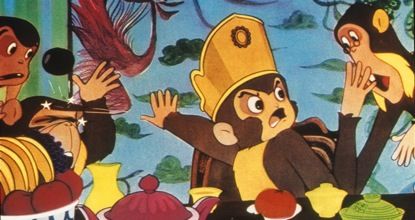
Original title Saiyuki
Original language Japanese
Country of Production Japan
Year 1960
Duration 88 min
Gender animation, adventure, fantastic, musical, sentimental
Regia Taiji Yabushita, Daisaku Shirakawa
Subject Osamu Tezuka
Film script Keinosuke Uegusa, Goro Kontaibo, Hideyuki Takahashi
Producer Goro Kontaibo, Hideyuki Takahashi
Executive producer Hiroshi Okawa
Production house Toei Doga
Distribution in Italian Globe Films International
Photography Harusato Otsuka, Komei Ishikawa, Kenji Sugiyama, Seigō Ōtsuka
Editor Shintaro Miyamoto, Kanjiro Igusa
Music Ryoichi Hattori (original vers.)
Les Baxter (international version)
Entertainers Akira Okubara, Yasuji Mori
Wallpapers Eiko Sugimoto, Kazuo Ozawa, Kimiko Saito, Mataji Urata, Saburo Yoki
Original voice actors
Kiyoshi Komiyama: They are Goku
Noriko Shindo: RinRin
Hideo Kinoshita: Cho Hakkai
Setsuo Shinoda: Sha Gojo
Nobuaki Sekine: Sanzo-hōshi
Michiko Shirasaka: Shoryu
Kunihisa Takeda: Shaka
Katsuko Ozaki: Kanzeon
Tamae Kato: Rasetsu-jo
Kinshiro Iwao: Giumaho
Shigeru Kawakubo: Kinkaku
Shuichi Kazamatsuri: Ginkaku
Italian voice actors
Massimo Turci: Ercolino (Son Goku)
Vinicius Sophia: Pig Ogre (Cho Hakkai)
Sergio German: Max Trivellone (Sha Gojo)
Joseph Rinaldi: Prince Amat (Sanzō-hōshi)
Flaminia Jandolo: Plague Zeze (Shoryu)
Renato Turi: King Amo (Shaka)
Renata Marini: Queen Amas (Kanzeon)
Ria Saba: Queen Scorpionfish (Rasetsu-jo)
Luigi Pavese: King Scorpionfish (Giumaho)
Source: https://it.wikipedia.org




